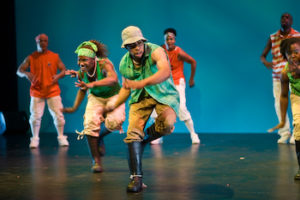
*Stepping, also called step dancing, is celebrated on this date in 1739. It is a percussive dance in which the participant's body produces complex rhythms and sounds through a mixture of footsteps, spoken words, and hand claps.
Black Africans brought their dances to North, Central, South America and the Caribbean due to the Middle Passage in the 1500s. In the West, these dance styles of hundreds of Black ethnic groups merged with white dances, extending the African aesthetic in the Americas. Dance has always been an integral part of daily life in Africa. In the Americas, it helped enslaved Africans connect with their homeland, keeping their cultural traditions alive. Before enslavement, Africans danced for many special occasions, such as a birth or a marriage, or as a part of their daily activities; dance affirmed life and the outlook of the future.
Stepping’s added cultural expression gained its distinctive percussive style after the 1739 Stono Rebellion in South Carolina, where drums were used. In its aftermath, lawmakers outlawed drumming to eliminate it as a source of communication between slaves. Following the ban, leading to the American Civil War, emancipation, and the Reconstruction era, percussive dance (stepping) emerged as slaves replaced the drums with their bodies.
In the early 1900s, the inception of Black Greek organizations changed, stepping into the style that many recognize today. NPHC fraternities and sororities had "Greek Sings," and this tradition gradually came to be used to celebrate initiations into the world of Greeks. The chapters would gather on campus, sing uplifting songs, and cheer about their fraternity or sorority. In later years, when the Greeks sang songs, they added movements such as walking in a circle and clapping hands. The sororities were singing songs up to the early eighties, and they still have traditional songs they sing today.
Meanwhile, the fraternities began to add movement to their songs. In later years, "Greek Sings" became "Greek Shows," which were a major event today. The first official Greek Show was held at Howard University in 1976. Stepping has become popular among Greek organizations to show spirit and pride in their fraternity or sorority. The most popular step routines have been passed down, and many of the songs are still used and housed in each fraternity's and sorority's history archives. Often, a step performance ends with or incorporates the use of a chant that is associated with the respective organization. A chant is a worded song or has a rhythm specific to that organization. Each organization has its own.
Over time, more and more organizations have created moves to continue this growing passion; however, certain steps and moves originated and are considered signatures of particular organizations. For example, "The Nutcracker" is unique to the Phi Beta Sigma fraternity, "The Dove" is unique to the Zeta Phi Beta sorority, and "The Q Hop" is originally from. The Omega Psi Phi fraternity, "The Alpha Train," is a staple of Alpha Phi Alpha, and "The Poodle Prance" is a signature move of the Sigma Gamma Rho sorority.
The first nationally syndicated stepping contest, S.T.O.M.P., aired in 1992 and was choreographed by Alpha Phi Alpha fraternity. Stepping is a complex performance that melds folk traditions with popular culture and involves synchronized percussive movement, singing, speaking, chanting, and drama. It is now practiced globally; the tradition has been emulated by Latino fraternities and sororities such as Lambda Sigma Upsilon fraternity and Omega Phi Beta sorority.
This has led to an increase in the participation of Latino Greek organizations in step show events, with groups often adding influences from Salsa, Merengue, and Bachata, as well as other traditional Latino music. Latino Greeks perform in more step shows, stroll competitions, and social functions on college campuses throughout the United States. White and Asian fraternities and sororities have also emulated stepping. Stepping is generally performed by groups, often in arrangements that resemble military formations.
Stepping may also draw from elements of gymnastics, tap dance, march, or African and Caribbean dance or include stunts in individual routines. Some stepping forms include props, such as canes, rhythm sticks, fire, and blindfolds. The tradition of African American stepping is rooted within the competitive schoolyard song and dance rituals practiced by historically African American fraternities and sororities beginning in the mid-1900s.
Black stepping originates in military close-order, exhibition drills, and African foot dances such as the Welly "gumboot" dance. It also drew greatly from the performances and movements of old-school R&B groups such as the Temptations and The Four Tops. Stepping has been featured in films and shows such as School Daze (1988), Mac and Me (1988), Drumline (2002), Stomp the Yard (2007), and the following TV series: A Different World, Sister, Sister, Seinfeld, and Cheers. Groups in schools, churches, cheerleading squads, and drill teams also perform stepping.